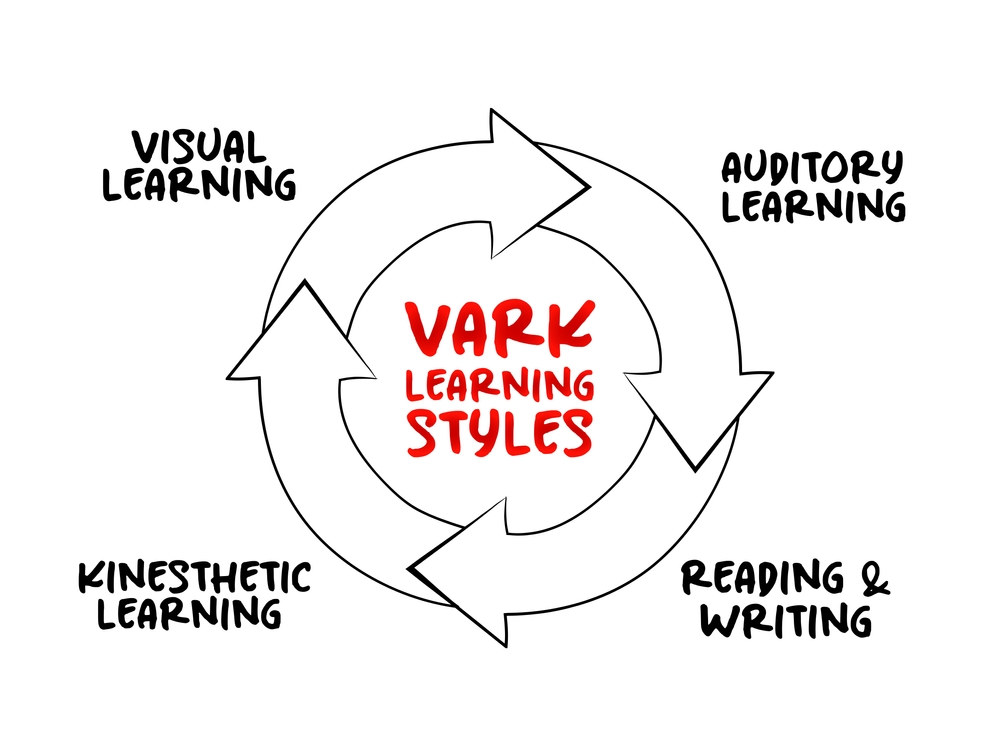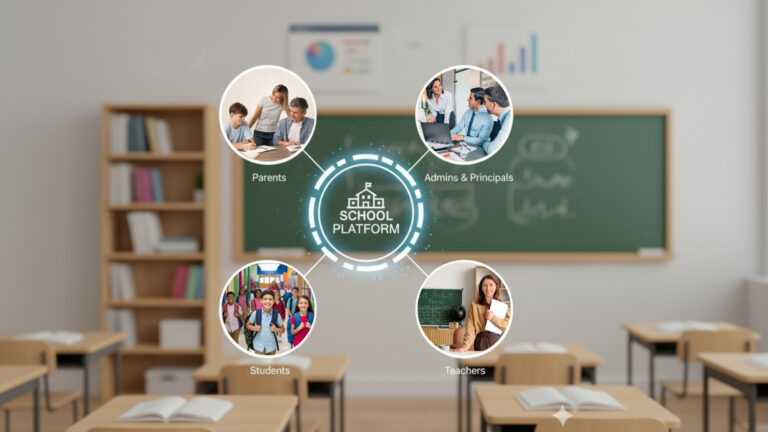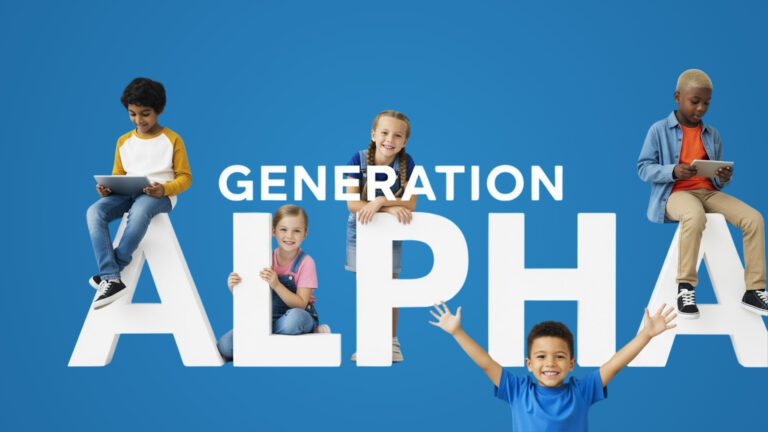كل طالب يختبر العالم المحيط بشكل مختلف، ومع ذلك تأتي طرق مختلفة وفريدة يتعلم الطلاب من خلالها. كمعلمين، فإنه من المهم أن نفهم هذه الأنواع المختلفة من أساليب التعلم لأنها تؤثر بشكل كبير على نتائج المتعلمين ومنحنيات التعلم. يجب على المعلمين أن يتأملوا مليًا في أساليب التعلم المختلفة عند التعامل مع طلابهم وتخطيط دروسهم بحيث تلبي إحتياجات أساليب التعلم لدى الطلاب. ولكن ماذا يحدث إذا لم يفهم المعلمون تلك الأساليب المختلفة للتعلم بشكل كامل؟ قد ينتهي بهم الأمر مع عدد من الطلاب المتأخرين عن زملائهم في الفصل، ببساطة لأن أسلوب تعلمهم الفريد لم يتم اكتشافه بعد.
مسؤولية المعلم هي تكييف دروسه لتلبية الاحتياجات الفريدة لكل مجموعة من الطلاب. ويتعلم الطلاب بأفضل شكل عندما يهتم معلموهم بنقاط قوتهم، لضمان فهمهم وتعلمهم المفاهيم المختلفة.
الآن، ما هي أنواع المتعلمين في فصلك، وكيف يمكنك تلبية احتياجاتهم؟ سنعرض في هذه المدونة الأنواع الأربعة من أنماط التعلم وكيف يمكن للمعلمين الاهتمام بهذه الأنماط في الفصل وكيف يمكن لنظام إدارة التعلم تعزيز عملية التعلم بأكملها.
أساليب التعلم
يشير أسلوب التعلم الفردي إلى الطريقة المفضلة لتعلم الطالب محتوى جديد. عندما تعلمون مجموعة من الطلاب، قد تجدون أن بعضهم يفضل المشاهدة، والبعض الآخر يفضل التحدث عن المادة، كما يفضل الآخرون التعلم عن طريق التجربة. إن فهم الاختلافات بين أساليب التعلم وكيفية مناشدة كل منها هو مفتاح لخلق تجربة تعليمية أفضل.
تختلف أساليب التعلم من شخص إلى آخر — وليس كل شخص يندرج ضمن فئة واحدة. غير أنه فيما يلي بعض الأنواع الأكثر انتشارًا للمتعلمين:
١. متعلمون بصريون
كيفية التعرف على المتعلمين البصريين في فصلك: المتعلمون البصريون هم الطلاب الذين يعالجون المعلومات بشكل أفضل عندما يتم تقديمها بطريقة مرئية، مثل من خلال الصور والرسوم البيانية والاتجاهات المكتوبة وغير ذلك. ويشار إليه أيضا بأسلوب التعلم "المكاني". هؤلاء هم الطلاب الذين يرسمون، ويصنعون القوائم، و يدونوا الملاحظات.
كيفية تلبية احتياجات المتعلمين البصريين: إذا كنت تقوم بتعليم مجموعة من المتعلمين البصريين، فإن السبورة البيضاء أو السبورة الذكية هي أفضل صديق لك. دع الطلاب يرسمون الصور والرسوم البيانية على اللوحة، أو اطلب منهم أن يرسموا أمثلة بناء على ما تتحدث عنه. قد يحتاج المتعلمون البصري أيضا إلى المزيد من الوقت لفهم المواد، وبالتالي منحهم بعض الوقت والمساحة لاستيعاب ما يرونه.
٢. متعلمون سمعيون
كيفية التعرف على الطلاب السمعين في فصلك: غالبًا ما يتعلم الطلاب السمعيون بشكل أفضل عندما يستطيعون سماع حديث معلميهم عن الموضوع. وهم يميلون إلى تفضيل الاستماع إلى المحاضرات على قراءة الملاحظات، وقد يحاولون تعزيز مفاهيم جديدة بتكرارها بصوت عال. هؤلاء الطلاب رائعون في وصف الأشياء شفهيا ويميلون لأن يكونوا قارئين أبطأ من الأنواع الأخرى من المتعلمين.
كيفية تلبية احتياجات الطلاب السمعيين: لأن هؤلاء الطلاب يميلون إلى أن يكونوا ثرثارين ويسهل تشتيتهم، قم باشراكهم في المحاضرة من خلال مطالبتهم بتكرار المفاهيم الجديدة مرة أخرى لك. اطرح الأسئلة ودعوهم يجيبون. تعتبر مناقشات المجموعة مفيدة للمعالجات الصوتية. كما أن مشاهدة الفيديو والاستماع إلى الموسيقى يمكن أن يفيد هذه المجموعة.
٣. متعلمون القراءة/الكتابة
كيفية التعرف على المتعلمين القراءة والكتابة في فصلك: وفقًا لنظرية VARK Modalities التي طورتها فليمنغ وميلز في 1992، فإن المتعلمين الذين يدرسون القراءة والكتابة يفضلون التعلم من خلال الكلمات المكتوبة. أما المتعلمون البصريون يفضلون التعلم من خلال الصور - على سبيل المثال، الرسوم البيانية والصور الفوتوغرافية والرسومات. تنجذب هذه الأنواع من المتعلمين للكتابة والقراءة، خاصة للتعبير عن الذات. فهم يحبون البحث عن الكلمات في القاموس والبحث في الإنترنت عن معلومات.
كيفية تلبية احتياجات الطلاب السمعين: نظرًا لأن جزءًا كبيرًا من النظام التعليمي التقليدي يعتمد على كتابة المقالات، والبحث، وقراءة الكتب، فإن الطلاب الذين يفضلون هذا النمط من التعليم يسهل تلبية احتياجاتهم. ولكن تأكدوا من منحهم الوقت الكافي لاستيعاب المعلومات من خلال الكلمة المكتوبة ومنحهم الفرص للتعبير عن أفكارهم على الورق أيضًا.
٤. متعلمون حركيون
كيف تتعرف على المتعلمين الحركي في فصلك: الطلاب الذين يتعلمون من خلال الحركة واللمس يدعون طلابًا حركيون. قد يجدون صعوبة في الجلوس بلا حراك وغالبا ما يتفوقون في الرياضة أو في الرقص. وقد يحتاج التلاميذ إلى أخذ فترات إستراحة أكثر تكرارًا عند الدرس لفترات طويلة من الوقت.
كيفية تلبية احتياجات المتعلمين الحركيين: لمساعدة هؤلاء الطلاب الحركي على التعلم، على المعلم أن يجعلهم يتحركون. شجع الطلاب على التحرك في الفصول الدراسية وحاول تمثيل مشهد معين من كتاب أو درس تقوم بتدريسه. حاول أيضًا دمج الحركة في الدروس: فهذا يساعد الطلاب على الحفظ كما يمارسون الألعاب التعليمية التي تشمل التحرك في الفصول الدراسية، أو أجعل الطلاب يكتبون على السبورة البيضاء كجزء من النشاط.
تعليم مخصص
من المهم أن نفهم أنه لا يوجد أسلوب تعليمي أفضل من آخر، ولا يوجد نهج "المقاس الواحد الذي يناسب الجميع" للتعلم. وبتحديد أسلوب الطفل في التعليم الأساسي، يمكن للمدرسين العمل معهم على أساس فردي لضمان حصولهم على أفضل خبرة تعليمية ممكنة.
أنظمة إدارة التعلم كأداة للتخصيص
مهمة المعلم هي تكييف دروسهم لتلبية إحتياجات طلابهم بشكل أفضل، ولكن هذا قد يكون ساحقا ويستغرق وقتا طويلا. إذا، ماذا لو كان لدى المعلمين أداة يمكن أن تساعدهم في مشاركة المواد التعليمية التي تساعد المتعلمين على الاستفادة من قدراتهم الكامنة؟ باستخدام نظام إدارة التعلم مثل Skoolix، يمكن للمدرسين مشاركة المواد بسهولة مع طلابهم في بضع دقائق فقط مما يؤدي في نهاية المطاف إلى تحسين نتائج التعلم.
إضافي: قم بتنزيل استبيان VARK من هنـاوشارك طلابك في الإجابة لكي تتمكن من الحصول على مزيد من المعلومات حول أساليبهم التعليمية المفضلة.





